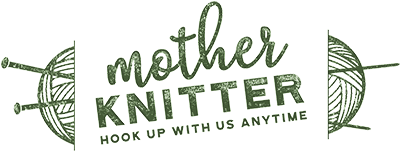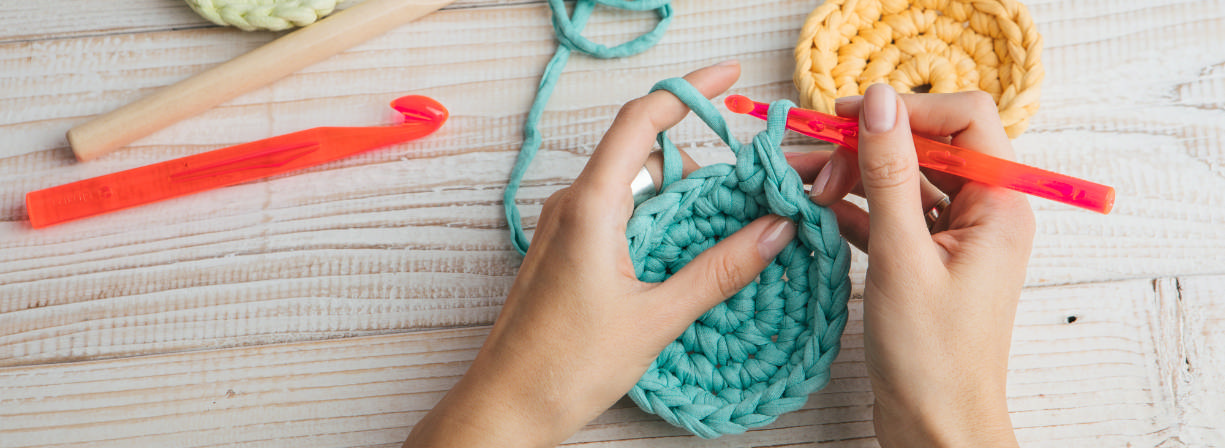What is crochet?
Before we look into its origins, it might be easiest to explain crochet by comparing it to knitting. Crochet, unlike knitting, is a needlework technique that utilizes a single hooked tool to interconnect loops of yarn, producing a delicate and intricate fabric. Crochet patterns are more intricate than knitting patterns due to the use of just one tool with more stitches and locations in which to place those stitches. This allows crocheters the ability and range of stitch combinations to create delicate, intricate designs and patterns, making crochet a popular choice for making lacy shawls, doilies, and other decorative items, practical items like blankets, hats, scarves, and bags, and garments like classic sweaters, crop tops, and even bathing suits. Crochet can also be used to make practical items like blankets, hats, scarves, and even bags.
The true origins of crochet are shrouded in mystery and remain largely undocumented. Some sources suggest that crochet originated in Arabia, where it spread along Arab trade routes to other parts of the Mediterranean. Others claim that crochet has roots in indigenous South American tribes. Another theory suggests that crochet evolved from the Chinese needlework technique that spread to Turkey, India, Persia, and North Africa. However, the development and widespread popularity of crochet, as we know it today, is attributed to European immigrants to the US in the early 19th century.
However, there are some needlework techniques of yore, that are still practiced, and are widely believed to be precursors to crochet. Two such techniques are Shepherd’s knitting and Tambour embroidery.
Shepherd’s knitting
The oldest form of crochet is slip-stitch crochet, but that is a term we use today. It was known as “shepherd’s knitting” in the British Isles and had other names in other languages.
The technique is said to have been used by shepherds to pass the time while tending to their flocks in northern Europe and involved using a long, straight needle with a hooked end to manipulate wool or other fibers. The hooked end allowed the shepherd to pull the yarn through loops and create intricate designs similar to modern crochet.
Shepherd’s knitting typically uses thicker, coarser yarns and creates designs in a loose, open stitch that resembles lace. This technique was a precursor to modern crochet, but there are key differences between the two. Crochet is usually worked with a single hook and involves loops and knots, while shepherd’s knitting uses a hooked needle to pull the yarn through a series of loops. Additionally, crochet typically uses finer, smoother yarns and results in a more dense, compact fabric than shepherd’s knitting.
The true origins of shepherd’s knitting remain somewhat of a mystery, but its place in the evolution of crochet cannot be ignored. This ancient form of needlework laid the foundation for the intricate, delicate designs we associate with crochet today and continues to inspire crocheters and fiber artists alike.
Tambour embroidery
Tambour embroidery is the second precursor of modern crochet. This technique was introduced to the French by Chinese craftsmen in the late 1700s and quickly became popular among the French upper class and royalty. The term “tambour” comes from the French word for “drum,” a nod to the rhythmic and repetitive motion used in the embroidery process.
Tambour embroidery is often referred to as “crochet-on-fabric” due to its similarities to crochet, including the tools and motions used in the embroidery process. However, it is a distinct technique from crochet and uses different materials to produce a different result. While crochet is worked with yarn and, usually but not always, creates a three-dimensional fabric, tambour embroidery uses thread on fabric and creates a flat, decorative design.
Despite its historical roots, tambour embroidery is seeing a resurgence in popularity today, with many people incorporating it into their clothing, accessories, and home goods.
Crochet today
In the early 20th century, the rise of mass-produced goods led to a decline in the popularity of handcrafts like crochet. However, in recent years, crochet has made a comeback, especially among young people, who are discovering it as a means of self-expression and accomplishment. Additionally, crochet has become an affordable hobby as the necessary supplies are widely available and relatively inexpensive.
With the rise of social media and online communities, it’s easier than ever to connect with other crocheters, share patterns and ideas, and find inspiration. The vibrant online crochet community has also made it easier for people to learn how to crochet, with numerous tutorials and video resources available for free online.
Whether you’re a seasoned crocheter or just starting out, crochet is a wonderful hobby that can be enjoyed by people of all ages and skill levels. It’s a versatile art form that can be used to create everything from delicate doilies to warm and cozy blankets, and it’s easy to learn and requires only a few basic supplies.
The benefits of Crochet
For individuals, crochet offers a range of mental and physical benefits. It is a form of mindfulness, which helps to reduce stress and anxiety by promoting relaxation and calming the mind. Crochet is also a low-impact hobby that can be done while sitting down, making it a good choice for people with limited mobility.
Crochet also provides a creative outlet, allowing people to express their imagination and produce unique and personalized items. This is particularly beneficial for people who enjoy making gifts for others, as they can create items tailored to the recipient’s tastes and preferences.
Crochet can also be a social hobby, as it is often enjoyed in groups, such as at local yarn stores or crochet clubs. This offers people the opportunity to connect with others who share their interests and to learn from each other’s skills and techniques.
For society, crochet is a sustainable and eco-friendly hobby, as it allows people to create their own clothing, accessories, and household items. This reduces the demand for mass-produced, mass-market items, which are often made from synthetic materials and can have a negative impact on the environment.
Looking for yarn for your next crochet project? There is something for every project and budget here.
PS. If you’re new to crochet, you might also like our tips for new crocheters.


